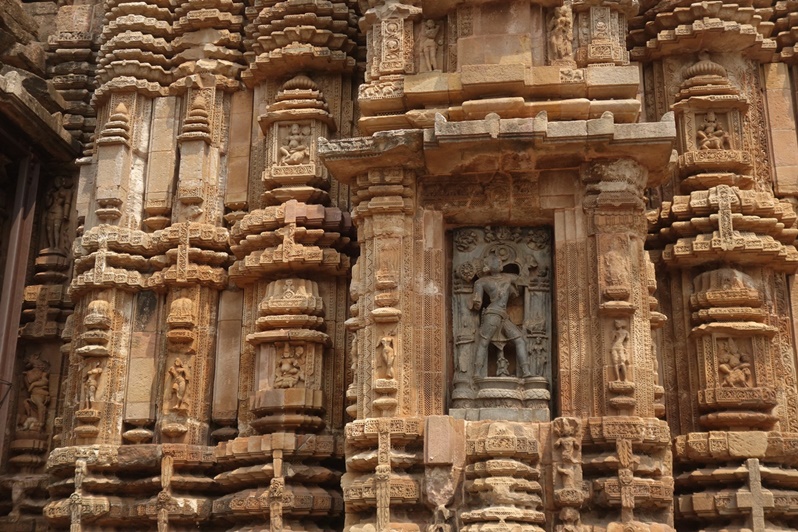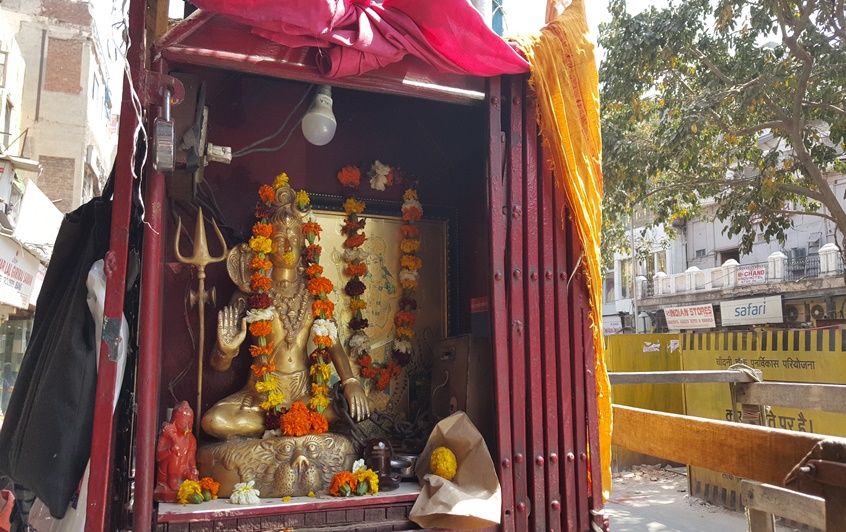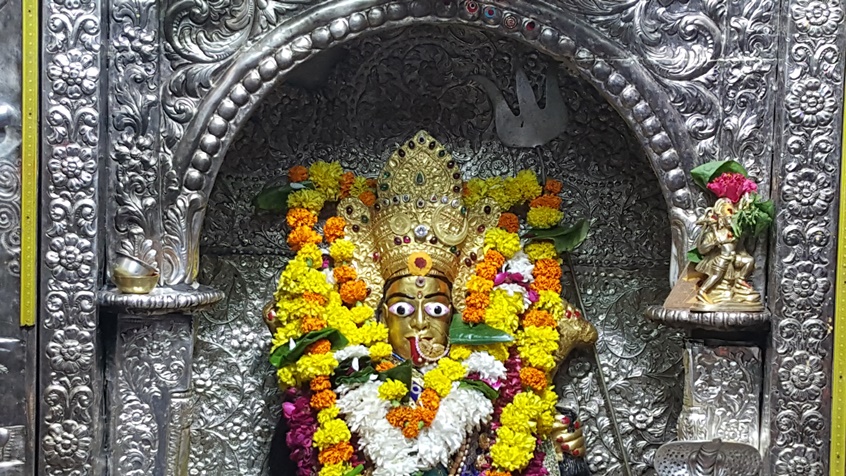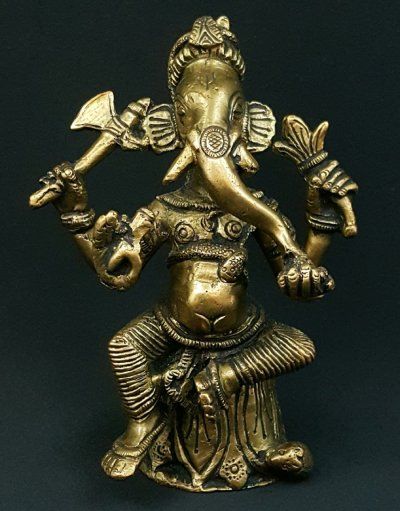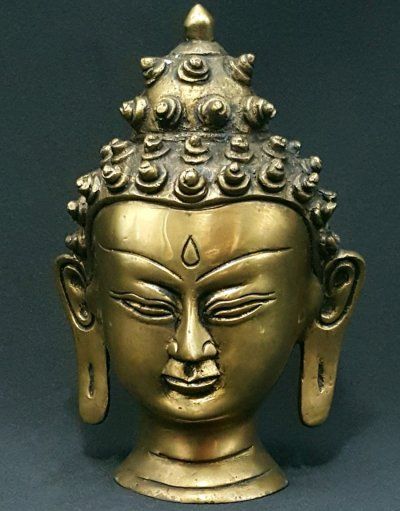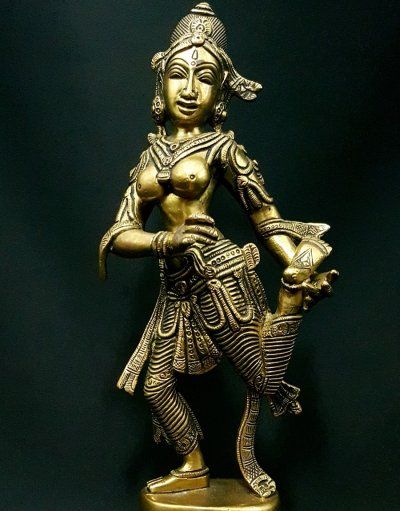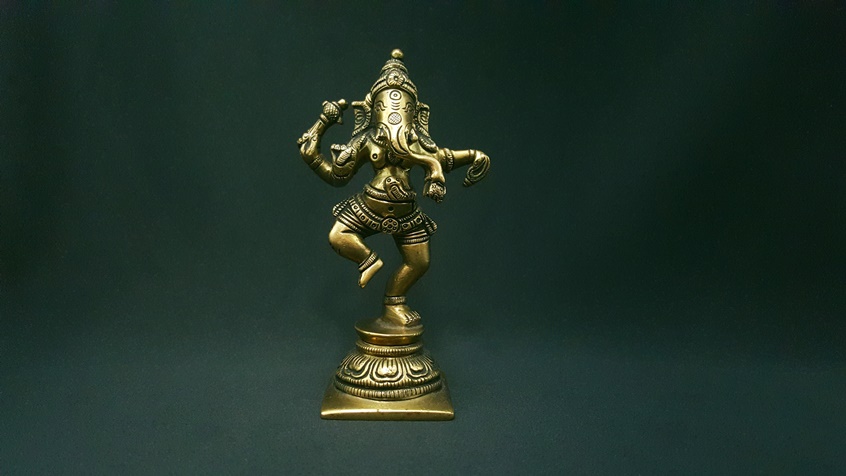
par Bertrand Bellaize, le 06 mars 2020
Originalité de la sculpture sacrée hindoue en Inde
Au sortir de l'époque Gupta, la sculpture Indienne développe une forme propre et originale.
L'ére Gupta : des statues dans un style classique
La dynastie Gupta considérée comme un apogée artistique est marquée par un style assez classique proche de la Grèce et de la Rome antique : les personnages (ou animaux) doivent être les plus réalistes possible, les canons de la beauté résident avant tout dans une parfaite proportion des formes, la finesse des traits, des détails. L’accent est également mis sur la structure musculaire parfaitement mise en évidence.
La sculpture : un outil de transmission spirituelle
Si les sculpteurs ne rejettent pas systématiquement ce modèle, voir certaines sculptures de Parvati, de danseuses..., pour le reste, l’hindouisme a développé son propre style avec une grande richesse de forme et d’expression.
Le réalisme pur est bien souvent inexistant car la sculpture participe avant tout de l’enseignement spirituel : il s’agit de transmettre un message à travers la représentation d’une divinité, de son véhicule et de ses attributs.
Shiva, par exemple, est l’un des trois dieux principaux de l’hindouisme : avec Brahma et Vishnou, ils forment la Trimurti.
Shiva représente l’aspect destruction - renouvellement : la vie ne peut se maintenir en continu, tout ce qui est arrivé à son terme doit être détruit, alors et seulement alors une nouvelle forme peut naître.
Shiva va donc être représenté sous de multiples formes en fonctions de l’aspect qui est mis en avant : destructeur – danseur – bienfaiteur – ascète – régénérateur … Il va être représenté sous une forme pacifique, apaisé, en méditation ou bien sous une forme terrifiante, terrible et il pourra prendre des noms et des aspects différents également : Bhairava le terrible, Shambhu le bienfaisant… et se doter d’attributs divers (la conque, le trident, le tambour...).
L'art sacré indien : une forme propre et originale
Alors les sculptures de divinités peuvent prendre un aspect déroutant pour nos yeux occidentaux longtemps habitués à d'autres canons de beauté et à une autre forme de rationalité : corps supportant de nombreux bras, jusqu'à dix parfois, tête d'éléphant sur corps d'homme (Ganesh), queue de poisson pour une des incarnations de Vishnou, Dieu prenant une forme animale tel Hanuman, le dieu singe... Parfois un dieu est représenté avec plusieurs têtes ! Sans compter les animaux qui les accompagnent et peuvent sembler incongrus : serpents, rat, cygne… ou mythologiques tel Garuda, homme-oiseau et monture de Vishnou.
La sculpture sacrée hindouiste présente donc une grande richesse d'expression qui peut dérouter au premier abord : formes inédites, incompréhensibles voir irrationnelles. Parfois les sculptures peuvent êtres sanglantes telle Kali tenant dans sa main une tête coupée, vêtue d'une pagne de bras coupés et parée d'un collier de crânes humains ou présenter un luxe de détails qui donne à l'œuvre un caractère chargé.
L'expression de la sagesse
Cependant ils se dégagent le plus souvent une grande beauté de ces statues, notamment dans les nombreuses représentations des divinités sous leur forme bienveillante, sage, apaisée dispensant richesse, savoir, fortune, connaissance, bonté, protection, fertilité, prospérité, beauté, justice…
Les proportions peuvent aussi être harmonieuses, douces, arrondies sans mise en valeur des muscles ; l’idéal féminin présente des femmes de grande beauté avec une exagération des formes : taille fine, seins ronds, les postures sont élégantes voir très sensuelles (l’exemple typique est le temple de Khajhurao au 10-11°s dans l’état du Madhya Pradesh où de nombreuses sculptures érotiques sont parfaitement conservées).
L’équilibre de la composition est parfaitement maîtrisé, les traits peuvent être finement ciselés : les artistes Indiens ont développé depuis des siècles une parfaite maîtrise de la taille de la pierre et du bois, du coulage du bronze et du laiton.
C’est art statuaire est aujourd’hui toujours très vivant, les formes ne sont pas figées et les représentations divines évoluent aussi.
